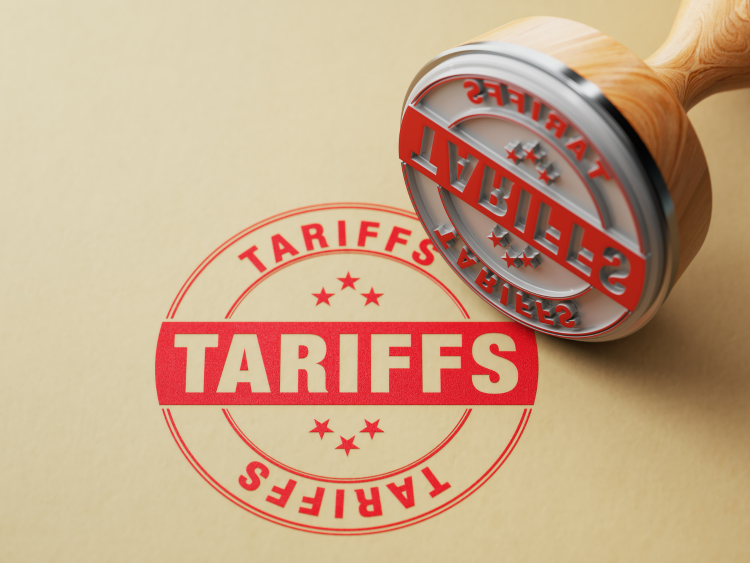Trade Cases

Price: Expect new trade shocks as Trump's 'reciprocal' tariff negotiations continue
Written by Alan Price & John Allen Riggins
April 27, 2025
The Trump administration has commenced whirlwind negotiations with trading partners before its reciprocal tariffs resume in early July. Until then, putting aside Section 232 tariffs, all countries are subject to a universal 10% tariff.
There are some very important caveats to this general rule. China saw its reciprocal tariff rate increase. Meanwhile, Canada and Mexico remain generally subject to International Emergency Economic Powers Act (IEEPA) tariffs—with exceptions for products that are compliant with the United States-Mexico-Canada Agreement (USMCA).
As a reminder, the goal of these reciprocal tariffs was to pressure countries to remove trade barriers that contributed to unbalanced trade relationships. An additional—and largely implied—goal of these negotiations is peeling trading partners away from economic reliance on China.
Negotiation challenges and opportunities
While it would take a Herculean effort to ink comprehensive bilateral agreements with all trading partners before the 90-day deadline, administration officials have hinted that negotiations are primarily focused on the largest non-China trading partners.
Recent reporting from the Wall Street Journal indicates that the administration is prioritizing “framework” agreements with 18 major US trading partners, which does not include China, Mexico, or Canada. These negotiations will occur in groups of six on a rolling basis over the next two months. But it is not currently clear which countries are involved.
Based on recent visits and meetings by senior administration officials, this is likely to include Japan, South Korea, and India. That’s because of the added importance of countering China’s economic influence in these nearby markets. Treasury Secretary Scott Bessent has cautioned that fully formed agreements with the United States’ largest trading partners were “not likely.”
Complicating matters, these negotiations face several stiff headwinds. First, many of the trade barriers in these countries are so fundamental to the trading partner’s economy that they will be difficult to undo quickly. For example, the White House identifies “exorbitant value-added taxes” (VAT) as a harmful trade policy.
VAT rates do indeed stymie US access to these markets. VATs also depress US demand for US products. That’s because foreign producers are incentivized to increase their exports to have the VAT rebated (or not collected). This is because the VAT rebate on export is often the entire basis of foreign-company profits. And, of course, VAT is a significant source of revenue for foreign governments.
These practices are detrimental to the US. But they are enshrined in the foreign countries’ laws and economic foundations. That means the best of scenarios will take time and political capital to revise. This may be more than some countries are willing to give, even at the risk of higher US duty rates. The EU and the UK, for example, have clearly stated that VAT is not negotiable.
Additionally, countries will also face significant counterpressure from their economic relationship with China. While Japan, South Korea, and India may be politically and diplomatically inclined to side with the United States on certain matters, each country has deep economic ties with China that cannot be quickly severed. All three countries are among the top five destinations for Chinese exports, and Japan and South Korea export large volumes of products to China. These economies argue that they cannot afford to abandon China wholesale. And some critical companies, like Japan’s leading automotive company, took steps last week to significantly increase production and investment in China.
China is also warning its southern neighbors not to participate in US overtures at China’s expense. Chinese President Xi Jinping recently highlighted this point in a sweep through Cambodia, Malaysia, and Vietnam. It is no coincidence that President Xi visited these countries, which have increasingly become investment and transshipment hubs for Chinese manufacturers.
Since the US imposed Section 301 tariffs on China under the first Trump administration, Chinese manufacturers have established assembly facilities to process Chinese inputs, or even moved entire manufacturing facilities to these countries, to avoid US duties. Often, the government of China directs these relocations with state funding. China has a vested interest in maintaining influence over these countries and would not tolerate a comprehensive bilateral agreement with the United States.
For these reasons, no one should expect dozens of comprehensive bilateral trade agreements in the coming weeks. Instead, we will likely see a series of framework agreements broadly addressing key topics, such as purchase commitments, import quotas, non-tariff barriers, and digital trade. The agreements may also highlight problems specific to each country. These concessions may be short-term victories but might not address systemic issues immediately. In other words, let the foreign country sort out how to rebalance trade rather than try to negotiate precise changes to their laws and policies because this may be easier to achieve on a compressed schedule.
Are ‘the Big Two’ negotiating?
Another wrinkle is the unknown status of negotiations with the Chinese government.
President Trump claimed his administration was in negotiations with China to alleviate the tariffs. The Chinese government has repeatedly rejected this claim, saying that there are no ongoing discussions.
Only the parties know which of these claims is correct—though it is worth noting that South Korean media outlets reported observing a delegation of Chinese officials entering the Treasury Department building as the Korean negotiating team was departing.
For now, though, it’s all a big mystery.
Country-of-origin crackdowns
There are also several concessions the administration could achieve in this short negotiating period that would close loopholes in the current tariff regime on China and encourage domestic re-shoring. Specifically, for the heightened duties on China to be effective, the United States needs commitments that trading partners are not facilitating Chinese circumvention and transshipment.
Sadly, these schemes remain rampant. And many countries are willing to turn a blind eye to cheating. Countries—not just specific companies—who get caught must face meaningful penalties when transshipment or circumvention is discovered. It would be helpful if agreements imposed a “cost” on the country for allowing cheating and transshipment as part of any agreement.
In addition to dealing with transshipment, the US needs to crack down on evasion. There are positive reports that country-of-origin issues are a priority area for the framework agreements. Already, importers have flooded Customs with requests to find that a third country is the country of origin where, in fact, the product is often just a kit and is being assembled in a different country to escape Chinese duties.
There needs to be some type of mechanism for applying Chinese duty rates on parts incorporated into products manufactured in a third country. Currently, US manufacturers may still be incentivized to nearshore or offshore production to maintain access to Chinese inputs.
For example, a US manufacturer importing and incorporating Chinese parts may decide it is more economical to move production to Mexico, import Chinese parts into Mexico, and ship the finished product to the United States under the tariff rates applied to Mexico. These rates could be much lower than the cumulative cost of US duties on the Chinese-origin parts. However, applying duties on those Chinese-origin parts, regardless of the third-country processing, would shut down this workaround. This may require changes in various executive orders but would eliminate the tariff management incentive for many complicated “supply chains.”
More 232s initiated by the day
In addition to reciprocal tariffs and bilateral negotiations, the administration has initiated several Section 232 investigations. Since March 10, the Administration has announced investigations into copper; timber and lumber; semiconductors and semiconductor manufacturing equipment; pharmaceuticals and ingredients; critical minerals and derivative products; and, most recently, medium- and heavy-duty trucks.
Conceivably, each of these investigations could result in duties on imports of these products to support national security by spurring domestic production. It will be interesting to see how these investigations interact with the ongoing negotiations on reciprocal trade and whether duties “stack”.
President Trump cast a wide net with the proposed, reciprocal tariffs. The negotiating stage will be critical to determining the success of his strategy. And for those suffering tariff whiplash, don’t expect the pace of change to slow down just because the reciprocal tariffs are entering a negotiating phase.
Editor’s note
This is an opinion column. The views in this article are those of an experienced trade attorney on issues of relevance to the current steel market. They do not necessarily reflect those of SMU. We welcome you to share your thoughts as well at info@steelmarketupdate.com.

Alan Price
Read more from Alan Price
John Allen Riggins
Read more from John Allen RigginsLatest in Trade Cases

SMU Survey: Less support seen for Trump tariff policies
Meanwhile, an increasing number think it's too early to say whether the penalties are going to bring more manufacturing to the US.

CRU: USW seeks exclusion for Canada from Trump’s tariffs
The union is also urging stronger enforcement against countries such as China which break trade rules, and a coordinated Canada-US strategy to protect union jobs across the North America

Price on trade: A lot happened last week – and it wasn’t all about tariffs
Should foreign investment be allowed to reshape the American steel Industry? Not to be lost in the recent on-again-off-again tariff frenzy, Nippon Steel’s proposed takeover of U.S. Steel has also found itself in President Trump’s crosshairs when it comes to trade and industrial policy. Nippon Steel initially announced its nearly $15-billion bid for U.S. Steel […]

Trump signs executive order aimed at making US shipbuilding ‘great again’
President Trump on Wednesday signed an executive order meant to breathe new life into American shipbuilding and curb Chinese dominance in the sector.
